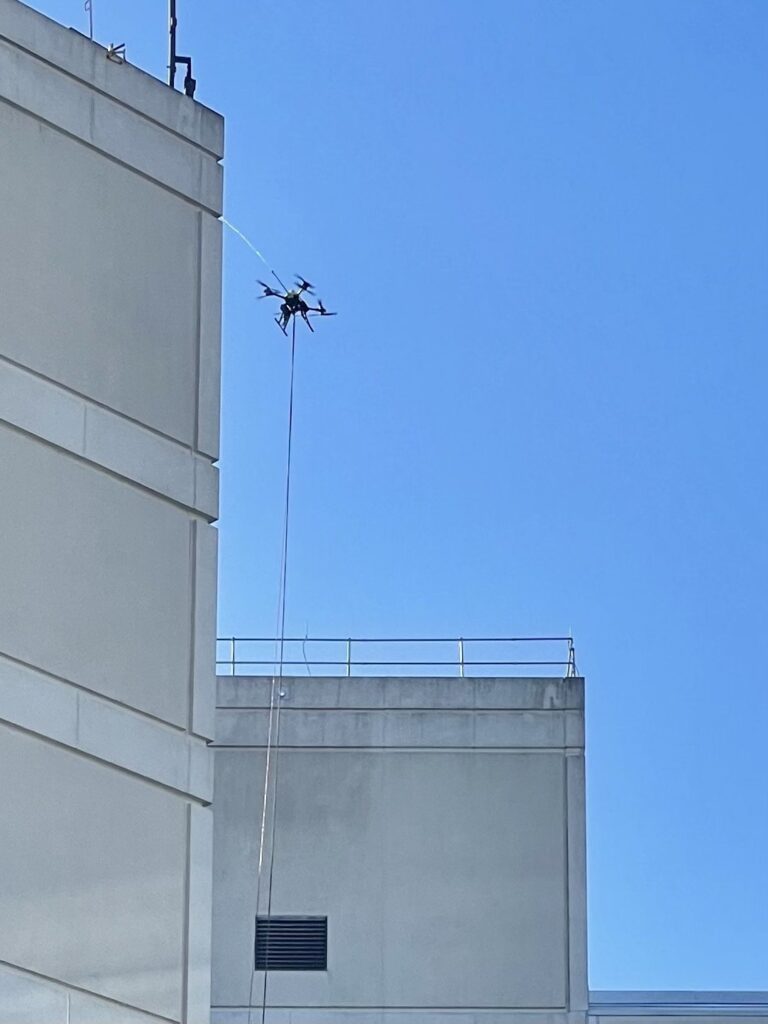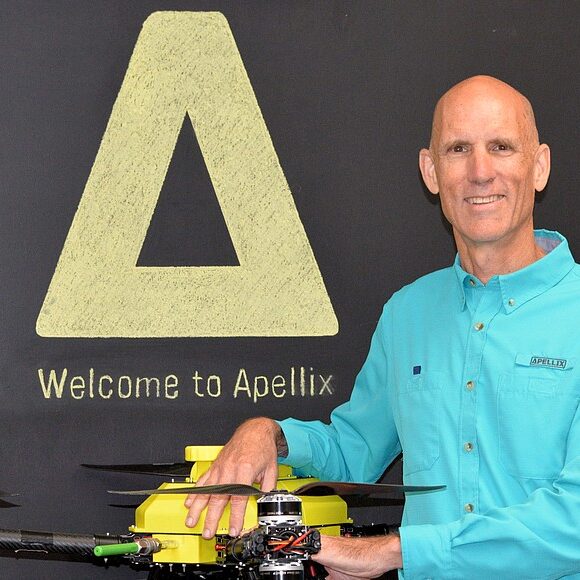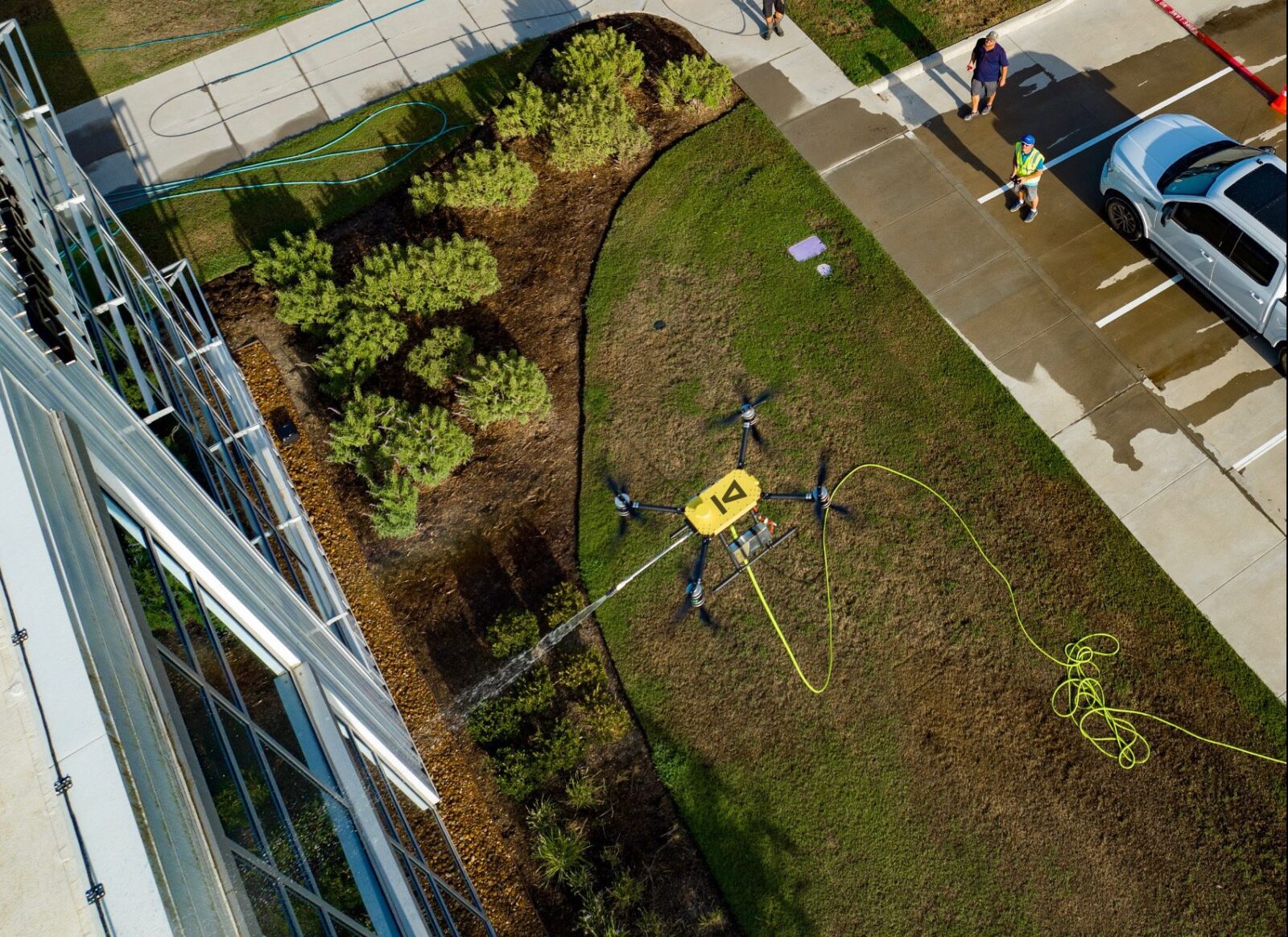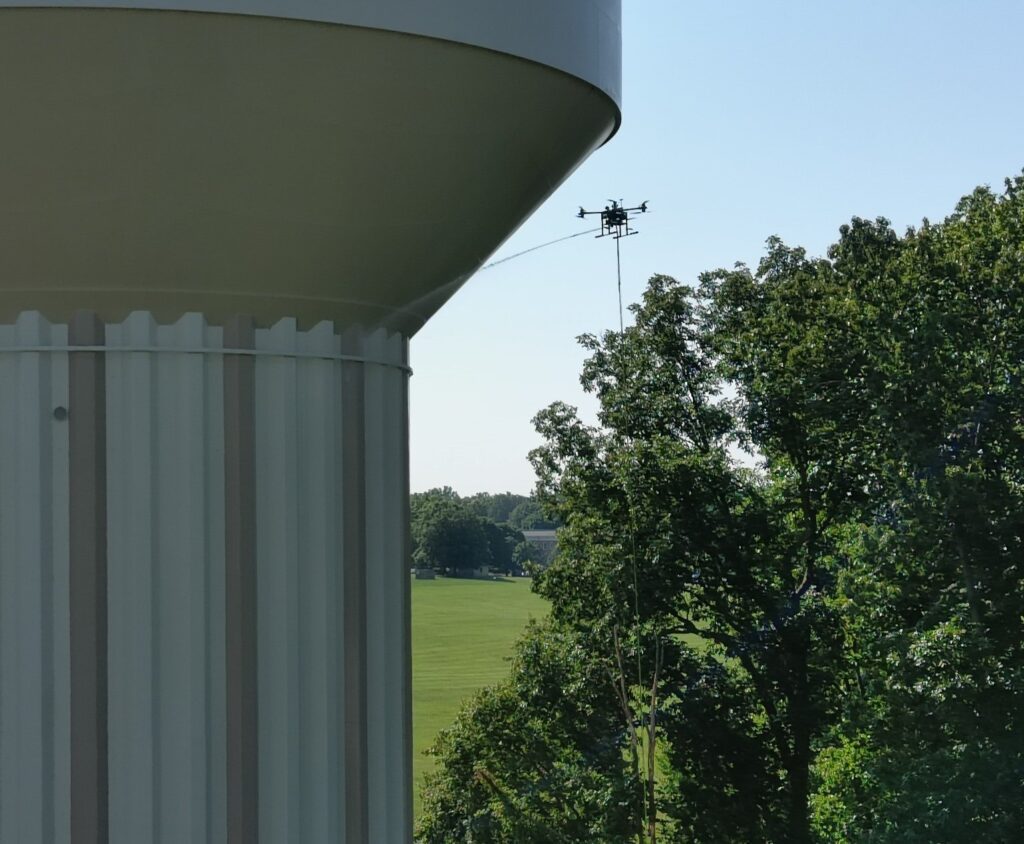Revolutionizing Maintenance: The Future of Power Washing Drones.
with Robert Dahlstrom, CEO of Apellix Drones
In an engaging interview, Robert Dahlstrom, CEO of Apellix Drones, delves into the evolving world of power-washing drones. He highlights their diverse applications, from cleaning industrial structures to maritime assets. Dahlstrom emphasizes the efficiency and safety benefits over traditional methods, noting significant time savings and enhanced cleaning capacity. He also touches on the necessary FAA regulations for commercial drone use and the future market trends, including greater automation and a shift towards corporate adoption. Highlighting a key case study and the potential for increased revenue in the industrial sector, Dahlstrom's insights paint a picture of a transformative technology reshaping maintenance and cleaning operations in various industries.

Let's begin our exploration into the dynamic world of power washing drones with Robert Dahlstrom, CEO of Apellix Drones. We delve into how this innovative technology is transforming industrial maintenance, and what the future holds for this exciting field.
Table of Contents
Which applications and use cases are most suitable for utilizing drones for power washing?
Any outdoor elevated surface where a touchless cleaning is possible. This can range from
- typical commercial structures such as hotels, hospitals, water towers, and office buildings
- Roads and related infrastructure such as bridges / overpasses, interstate signage, lighting
- Industrial structures such as storage tanks, refineries, and power plants
- Power grid/renewable power generation equipment, including transmission towers/insulators, wind turbines, and solar panels
- Maritime assets such as ships (in drydock) and offshore oil & gas structures and vessels
How do drones compare to traditional methods regarding efficiency, effectiveness, and safety in power washing?
- Drone set up is 5-10 minutes vs several hours for lifts and days for cranes, reducing non-work project time; drones can be dispatched without lead time/lift delivery scheduling
- A drone pilot can clean 10x the surface as a person in a lift
- When cleaning by drone, no one leaves the ground, reducing risk to employees and insurance costs
Are there any notable case studies or projects demonstrating the successful application of drones in power washing?
There is one on our website, "Man vs Drone" cleaning an elevated water tower https://www.apellix.com/power-wash-case-study
Are there specific regulations or certifications required for businesses using drones for power washing on a commercial scale?
- FAA Section 107 pilot certification is required for any commercial drone pilot
- FAA 137 operating certificate is required for "dispensing economic poisons" (pesticides or herbicides)
How do you foresee the commercial drone market for power washing evolving over the next 5-10 years?
- What is now a market of sole proprietors operating as service providers will evolve as asset owners and large corporate services companies become comfortable with the technology.
- The actual drone systems will evolve with greater automation and specialization for unique operating environments (e.g., wind turbines and power transmission line insulator cleaning)
What specialized training is necessary for crew members to safely and efficiently operate power washing drones?
- Basic piloting skills which can be learned from piloting typical recreational or photography-based drones
- A thorough knowledge of cleaning and cleaning chemicals
- Mission planning skills to mitigate project and environmental risks / safety mentality
- Specialized knowledge relating to the different flight chrematistics of tethered drones and drones that fly close to structures.
How does the use of drones compare to traditional power washing methods regarding speed and efficiency?
- A large community water tower may take two days of labor after staging and setting up (and taking down) a 150' boom lift to clean. A drone can do it in a ½ day.
- There is often a 10x or larger efficiency gain. For Example, the side of an 8 story building can be done in 21 minutes with a drone.
How can adopting power-washing drones enhance revenue generation?
- In the near term, service providers are competing against old technology and practices, resulting in exceptional margins and more satisfied customers. In time this advantage may be reduced as more providers use drones.
- In the long term, service providers will increase revenue and market reach through addressing the more profitable industrial sector which is currently poorly served.
- There are jobs that are difficult or impossible to complete with lifts, scaffolding or rope work that a cleaning drone can do. These instances can generate significant revenues and profits.

About the Expert
Robert Dahlstrom stands at the forefront of technological innovation in industrial maintenance, leading as the CEO of Apellix Drones. Specializing in the niche of power washing drones, Dahlstrom has carved a unique space in the industry. His expertise extends to the development and application of drone technology for cleaning and maintaining structures, particularly in challenging or hazardous environments. Under his guidance, Apellix Drones has become synonymous with cutting-edge solutions that enhance safety, efficiency, and effectiveness in power washing tasks across various industries. Dahlstrom's vision for integrating drone technology into traditional maintenance workflows not only promises to redefine industry standards but also to usher in a new era of automated, and cost-effective industrial cleaning.
Robert Dahlstrom, CEO of Apellix
Drone Industry Newsletter
Our newsletter provides valuable insights, news, and updates on drone regulations, technology advancements, and business developments in the industry.
Understanding Section 179 for Drone Service Providers As a drone service provider, staying ahead in a competitive market often requires…
16 Unique Agricultural Spray Drone uses Revolutionizing Modern Farming In recent years, agricultural spray drones have rapidly transformed the landscape…
The agricultural sector is poised for a technological revolution, with drone innovations marking a pivotal shift in farming methodologies. Specifically,…
Precision agriculture marks a paradigm shift in how farming approaches, moving from traditional, broad-scale strategies to highly efficient, data-driven methodologies.…
The incorporation of drone technology into the agricultural sector represents a significant transformation in farming methodologies, encompassing crop cultivation, monitoring,…
Harnessing the Power of Drone LiDAR for Land Surveying: Insights with Harrison Knoll with Harrison Knoll, CEO of Rock Robotic…
Part 137 Changes Impacting Agricultural Spray Drones with Bryan Sanders, President of (HSE) UAV, In an industry impacted by dynamic…
Transforming Agriculture: The Benefits of Using Drones in Livestock Management Technology integration into agriculture has given rise to new methods…

